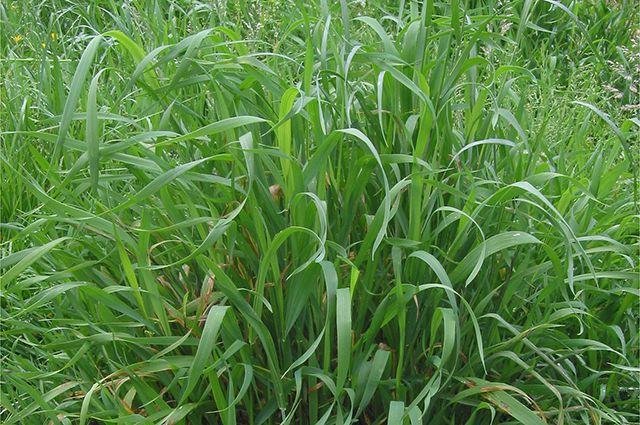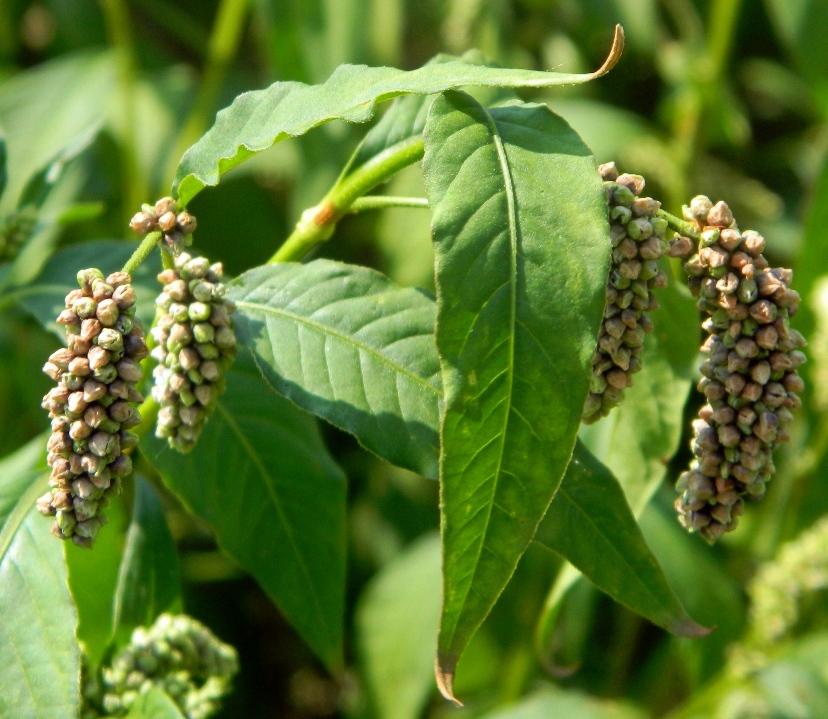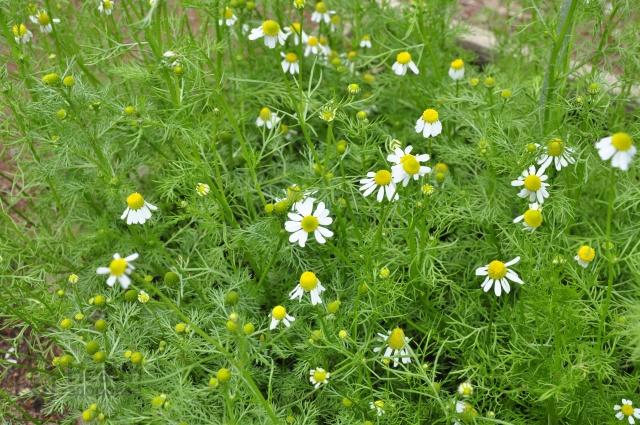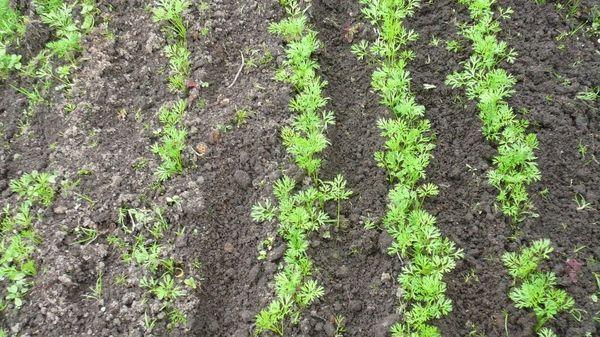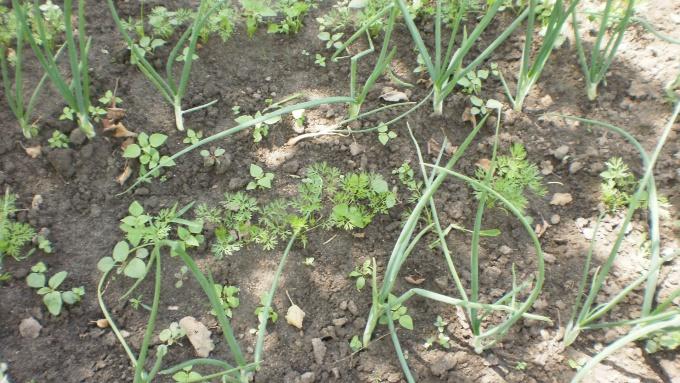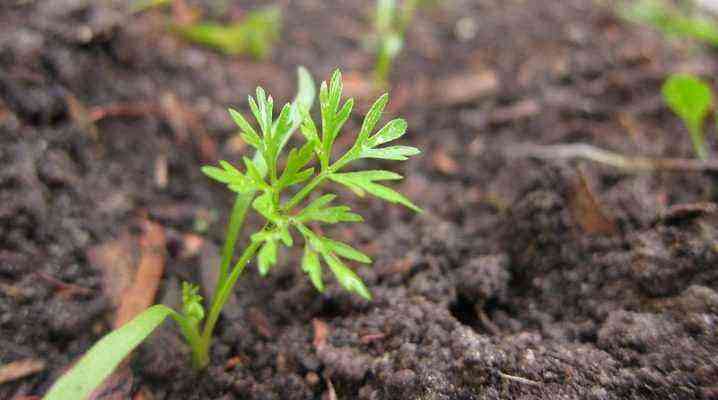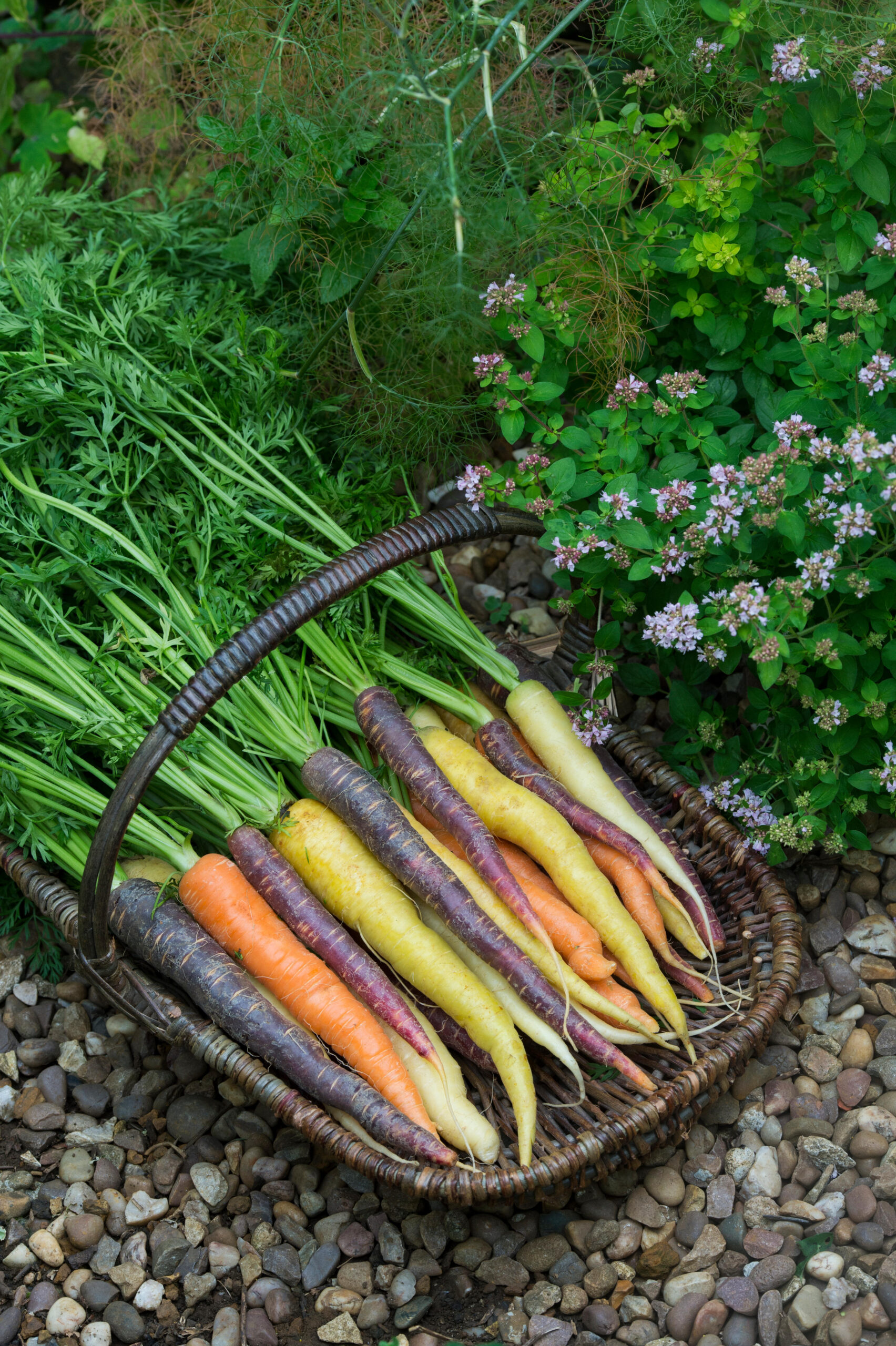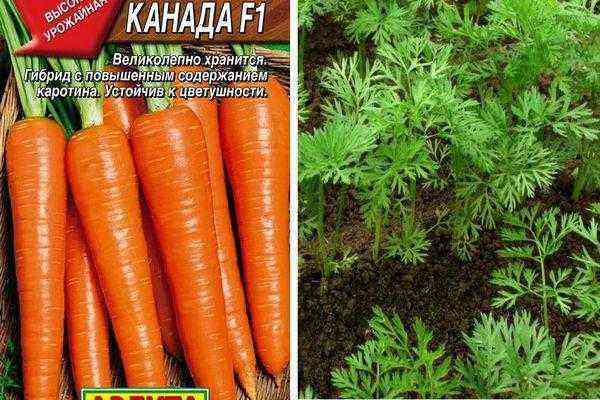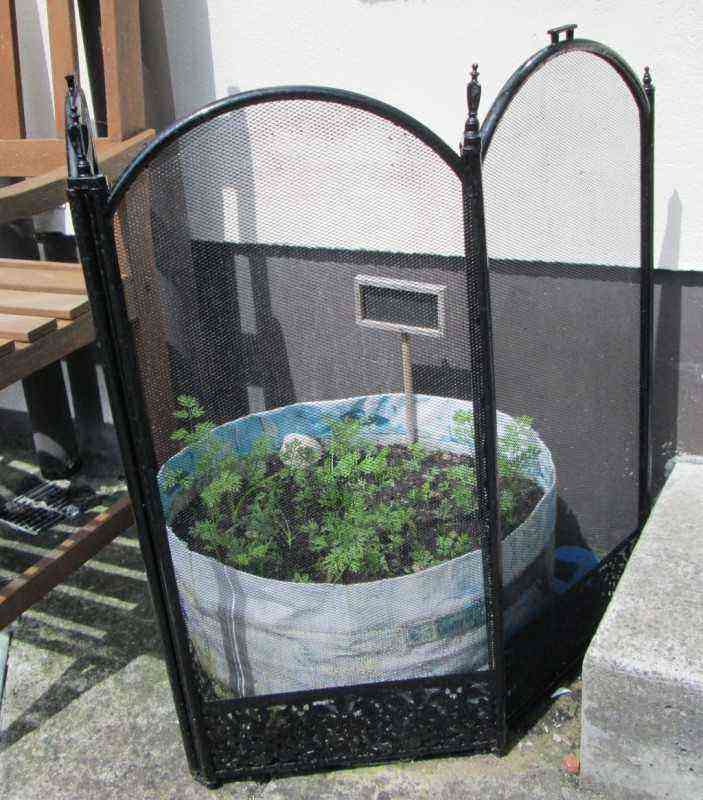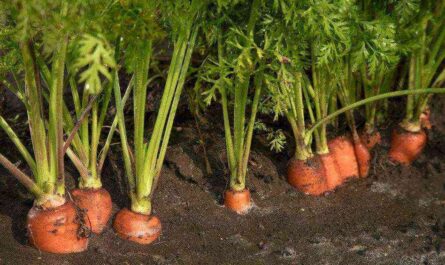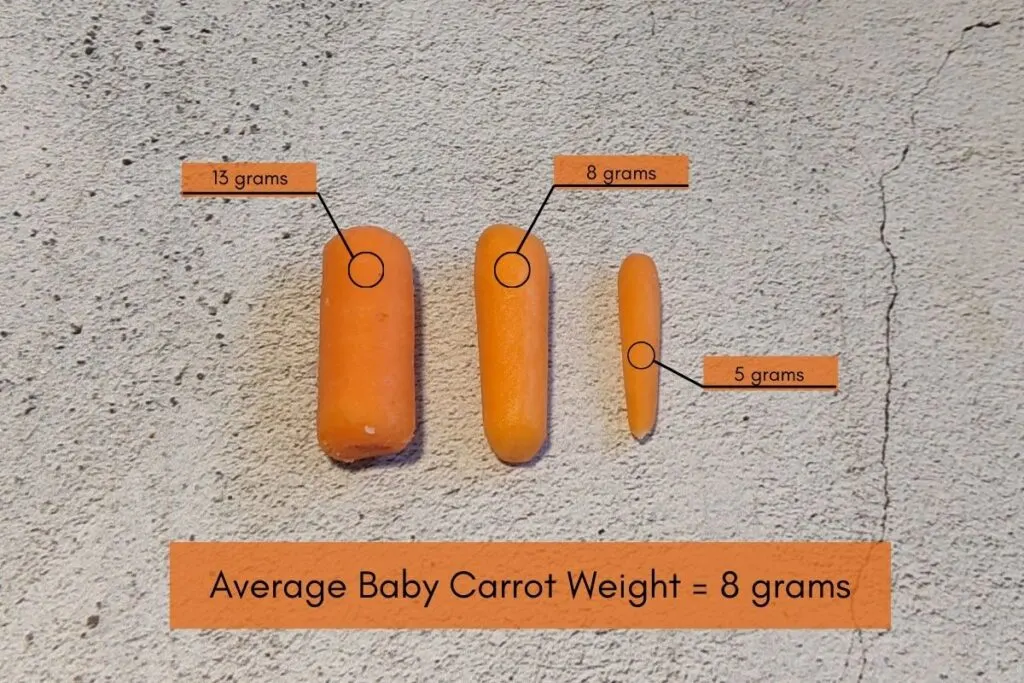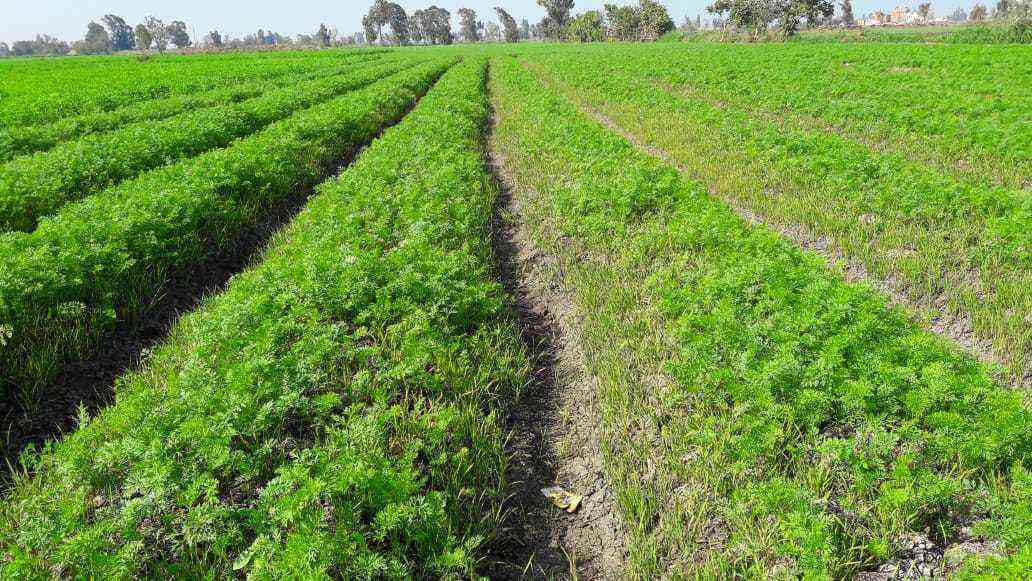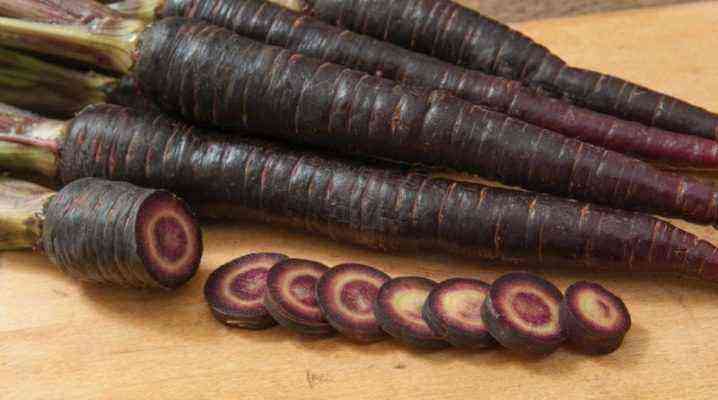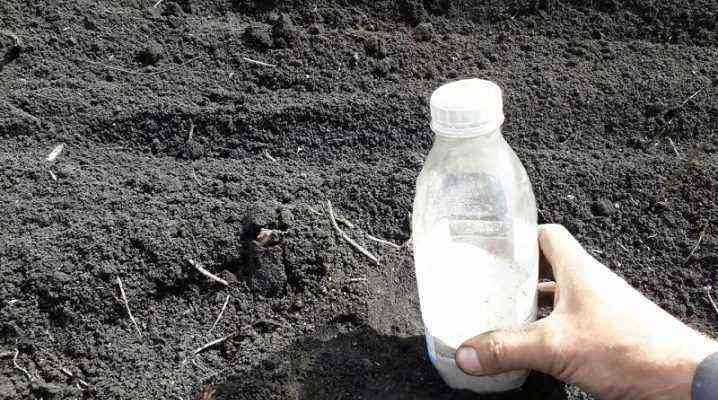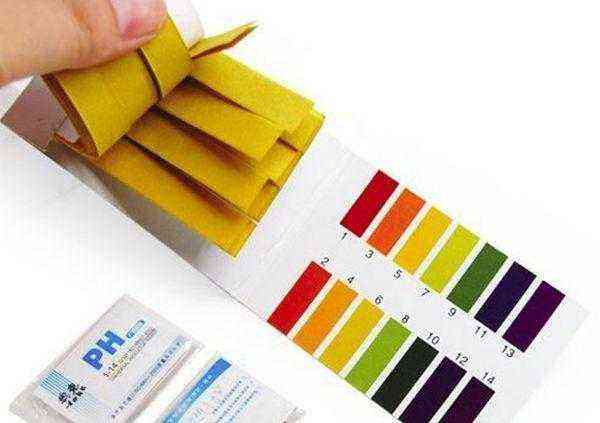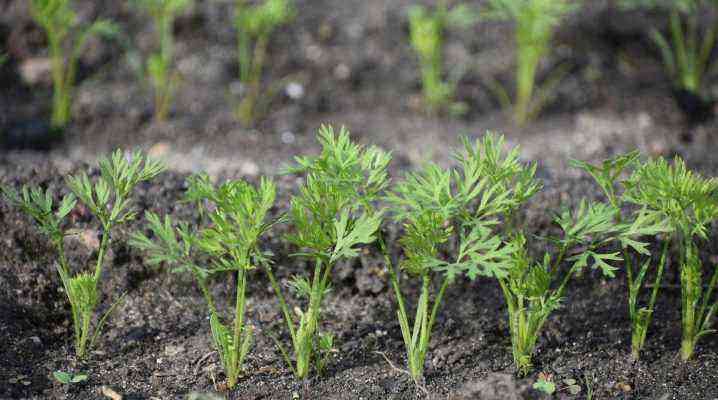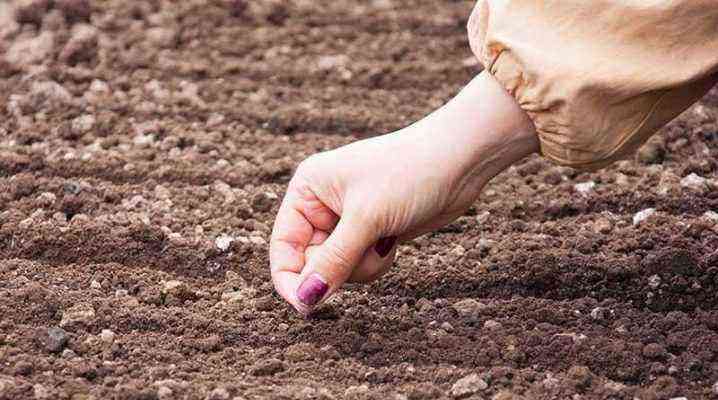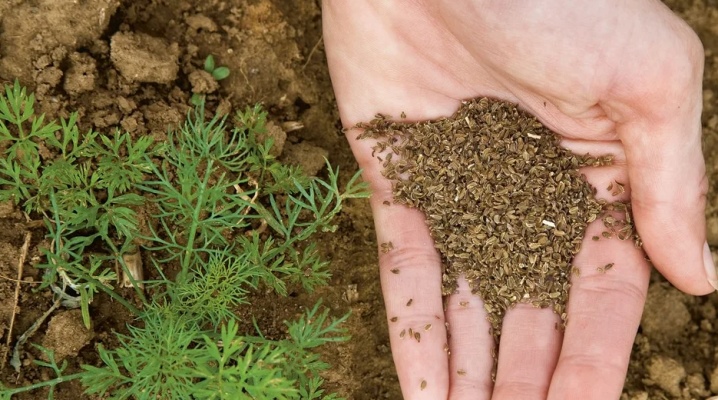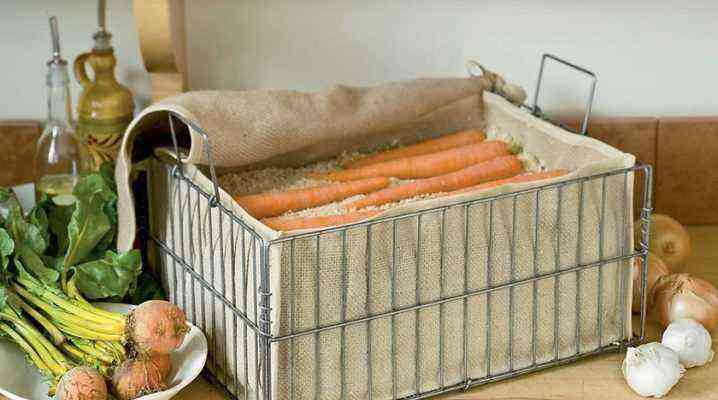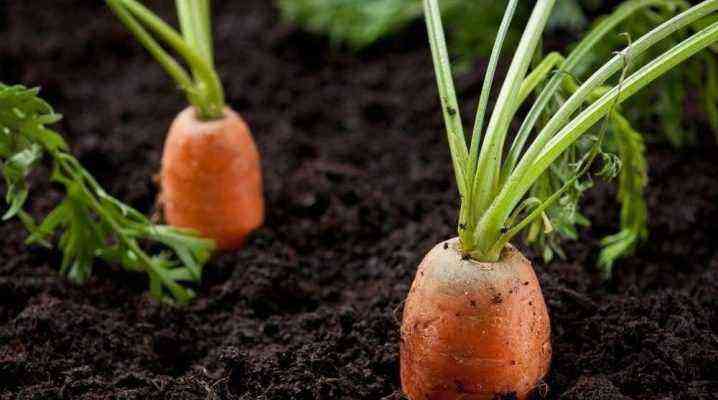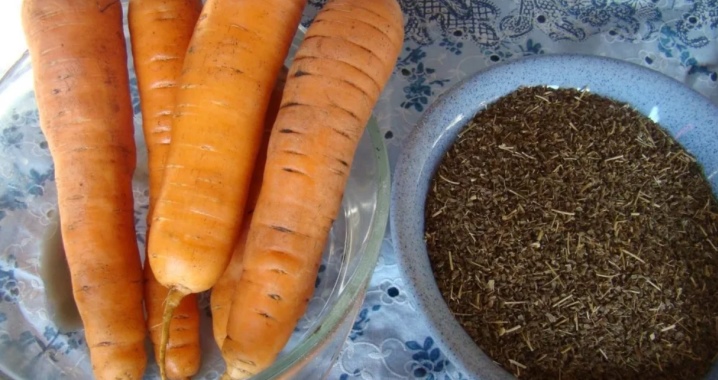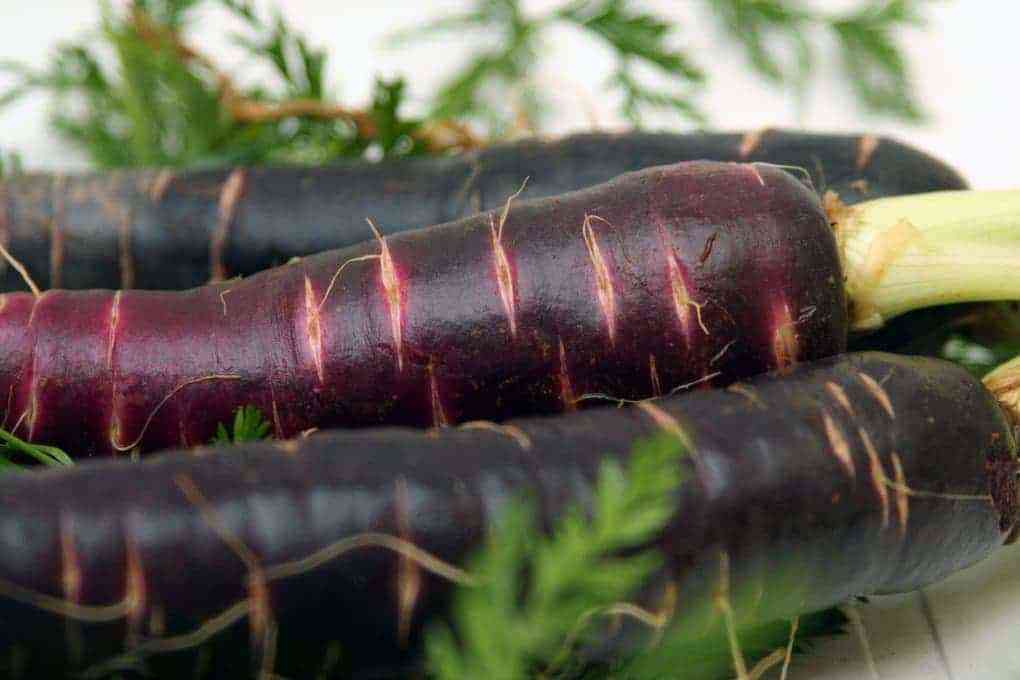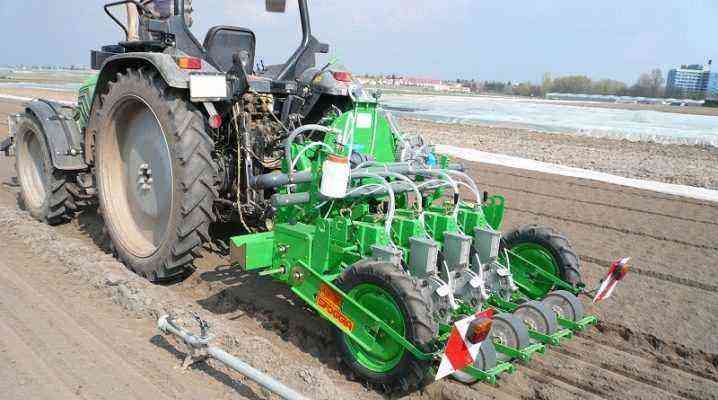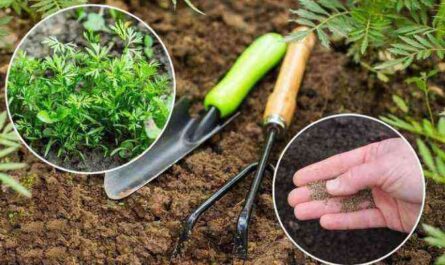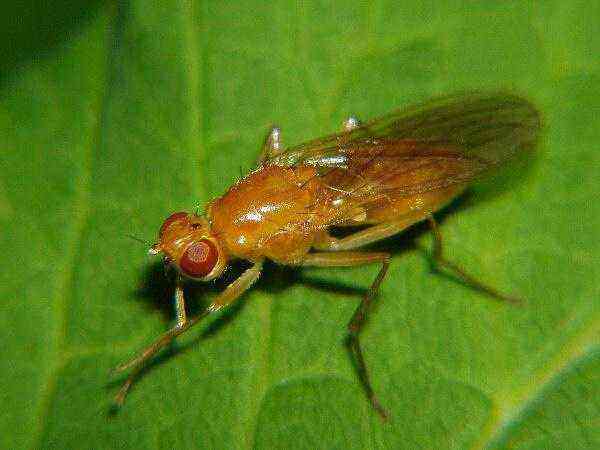Weeding the beds takes a lot of time, I want to speed up this process, because there is always a lot to do on the site. How to properly and quickly weed carrots, especially after the appearance of the first fragile young sprouts? To do this, use herbicides bought in stores, kerosene, solutions prepared independently.
Use of kerosene
Kerosene does not damage the fruits of carrots and dill, does not harm the soil. Destroys weed species of plants, prevents the appearance of harmful insects. After processing, root crops develop well and quickly gain growth.
Destroys
Kerosene destroys plants such as wood lice, colza, quinoa, couch grass, pikulnik, chicken millet.
Mokritsa
Woodlouse grows quickly, fills all the free areas of the garden. Even under adverse weather conditions, it does not die. The weed interferes with the nutrition of carrots, so you need to get rid of it. The grass has thin long roots, easily pulls out of the ground. If a piece of root remains in the ground, then it begins to grow again. Kerosene kills the roots of the plant.
After spraying, it completely dies after 2-3 days.
Quinoa
A tall plant, reaches a height of 50 cm. A flower with seeds is formed at the top. The grass is unpretentious to the soil and weather. It grows quickly, interferes with the development of useful plants in the garden. Quickly dies after treatment with kerosene.
Ripe
The vegetative period begins in early spring. A tall branched plant reaches a height of 80 cm. It blooms with bright yellow flowers. The root system is not very well developed. After pulling out, it develops again if parts of the roots remain in the soil.
Pyrée
This weed is hard to deal with. They have a powerful root system that grows rapidly on the ground and gives new shoots. Even if a small piece of the root has not been removed, the plant develops again. It has a creeping appearance, quickly fills fertile lands and inhibits the development of carrots, as wheatgrass feeds on minerals from the soil.
Pikulnik
On fertile soils it multiplies well and quickly. Pikulnik begins its growing season in early spring. Able to germinate even from deep layers of soil. At the top are small pink-purple flowers. The height is 30 cm. The leaves of the grass are lanceolate, dark green, the stem is tetrahedral.
chicken millet
Begins to grow from April. The weed is ubiquitous. Outwardly similar to wheat, the fruits are formed by grains woven into spikelets. The roots are powerful, strongly woven together, it is quite difficult to dig up the grass.
After treatment with kerosene, the upper shoot and roots die.
Buckwheat spreading
The plant forms a dense tree-like stem, the grass is tall. After flowering, seeds are formed throughout the stem. The roots are dense, wide. Begins development in the spring, gives new shoots until mid-autumn. It is difficult to deal with them due to the large number of seeds that are spread throughout the site.
grass roots survive
After treatment with kerosene, some weeds leave behind roots that sprout again. These include: creeping couch grass, field thistle, field bindweed, sow thistle.
Field dogfat
Grows in height up to 1,5 meters. It has powerful roots, with one central root that goes into the deep layers of the soil. The stems are green in color, blooms with purple flowers, similar to cornflowers. Thanks to a powerful root, after treatment with kerosene, it sprouts again.
couch
It grows up to 30 cm in height, the roots are small, in large numbers, tightly woven together. The leaves are green, grows quickly, tolerates bad weather well, takes all the nutrients from the soil.
field bindweed
A creeping plant with intertwined roots that quickly penetrate the soil and give new shoots. The leaves are wide, green in color, blooms with white flowers in the form of wide bells.
Osot
It has thick long roots that go deep into the soil, up to 50 cm. There are several types of thistle. It grows up to half a meter in height. It blooms with yellow flowers similar to dandelions. The leaves are wide, cut, green. The remains of the roots are capable of producing new shoots.
Do not die
The following plants are resistant to kerosene treatment: horsetail, chamomile, wild dill, common cutter. After spraying, they retain their appearance unchanged.
pharmaceutical camomile
The grass tolerates any conditions well, it is unpretentious to soil fertility. It grows up to 60 cm in height, white flowers with a yellow core are formed at the top. The roots are dense but shallow. Leaves are green, needle-shaped.
wild dill
Differs from ordinary dill in larger leaves. Forms umbrella inflorescences with yellow flowers, which later turn into seeds. Leaves and stems are green with a bluish tint.
Horsetail
It has deep dense roots that give new shoots underground. The aerial part forms a dense green stem with needle-like leaves. The shoots are dense, it is difficult to get rid of such a plant. Pieces of roots are capable of producing new shoots. Horsetail is resistant to kerosene.
Ordinary cutter
Develops in early spring. It has umbrella inflorescences with small white flowers. Stems and leaves are light green. The roots are branched, weak, it takes food from the upper layers of the earth.
Processing rules
To properly carry out the treatment with kerosene, you must follow a few rules. Know how often and how much to apply to the soil, what to use for spraying and whether to dilute.
How often
Processing with kerosene is carried out twice. First time after planting carrots. Second time in a week.
Cannot be bred
The solution must not be diluted with water or other liquids. It will lose its effectiveness and concentration will decrease.
Sprayer
Use a wide spray sprayer, goggles and a respiratory mask to carry out the treatment. It is impossible to water the soil with kerosene, its high concentration will destroy the carrots.
Important! Any manipulations with kerosene are carried out with rubber gloves so as not to get burned.
Time
Spraying is carried out before the appearance of the first shoots of carrots. If this is not possible, then kerosene is applied when the first 2-3 leaves appear on the sprouts of root crops. Repeated manipulation is performed after 7 days.
Safety measures
For your own safety, any procedures with kerosene are carried out with gloves. When spraying, wear a mask and goggles so as not to damage the mucous membranes of the respiratory tract and eyes. It is also recommended to wear a protective plastic or cellophane apron to prevent contact with exposed skin. Hair is covered with a scarf so as not to damage.
Signs of poisoning
Signs of chemical poisoning include:
- dizziness;
- nausea;
- vomiting;
- cyanosis of the mucous membrane of the throat;
- weakness;
- fainting state;
- constant smell of kerosene;
- difficulty breathing, wheezing in the lungs.
Important! If you have symptoms, you should go to the hospital for medical attention.
Traditional weeding
Traditional weeding involves pulling out all the weeds with your hands. The soil is loosened with a chopper to gain access to the roots of the grass. Weeding by hand is quite difficult and time consuming. It is difficult to pick out all the small roots and leaves from the ground with your hands. The procedure is carried out every 4-5 days.
Mulching
This is a soil covering with a special material that is laid around useful plants. This provides moisture retention, and harmful weeds will not be able to develop due to the blocking of sunlight. For mulching use a dark film, organic materials, compost.
Vinegar and salt
Well-known herbicide, popular with gardeners. 1 liter of vinegar and 1 kg of salt are mixed in 10 liters of water. The solution is sprayed with beds. Frequent treatments will lead to the death of cultivated plants.
Vinegar and citric acid
1 liter of vinegar and 100 grams of citric acid are diluted in a bucket of water. Spray the area before the first shoots appear.
Alcohol solution
The soil is treated with a solution of alcohol and water in a ratio of 1:10. The procedure is best done in early spring before germination.
Salt filling
Plentifully sprinkle the soil at the rate of 1 kg of salt per 1 square meter. Salt is washed out after rains and irrigation and penetrates into the soil, preventing weed roots from developing. Salt can also damage the roots of other plants.
Herbicidal soap for tillage
Herbicidal soap has the same composition as laundry soap. To prepare such a solution, 1 liter of vinegar, 1 kg of salt and a grated bar of soap are mixed in a bucket and poured with 20 liters of water. Stir until soap dissolves. Spray the soil.
Tips and answers to questions
Basic tips and answers to questions about weeding carrots:
- Any spraying is carried out in dry weather.
- Precautions must be taken when using herbicides. You also need to properly dilute the solution, following all the recommendations.
- Radishes, lettuce, spinach are planted next to carrots. They germinate faster and provide guidance when weeding carrot seedlings.
- After thinning carrots, the sprouts should not be left in the garden, they rot and contribute to the development of fungal infections.
- Pulling out weeds with small shoots of carrots must be done carefully so as not to spoil the seedlings. It is better to use a fork to pry up the roots of the weed.
Weeds with long deep roots should not be pulled out entirely. Cut off the upper shoot of the plant, find the central root in the soil and cut it with scissors.

